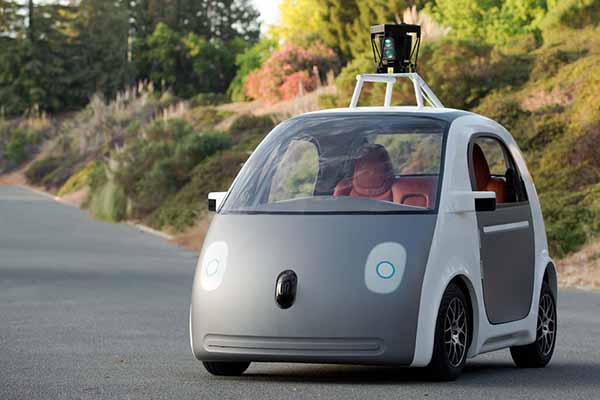One of the major highlights of the year 2022, in the automobile sector, was the launch of the Mahindra XUV700. The Mahindra XUV700 has become one of the most affordable SUVs in the Indian market to provide sophisticated Level-2 ADAS capabilities. This SUV has given a glimpse of the capabilities of future autonomous vehicle technology in automobiles to the aspiring Indian middle class.
Level-2 autonomy implies that it can maintain the car in its lane, vary its speed according to the speed of the vehicle in front of it, and deploy brakes in an emergency.
These levels of driver assistance technology are defined by the Society of Automotive Engineers and adopted by the U.S. Department of Transportation. Level 5 marks the fully autonomous vehicles.
Autonomous vehicles, also known as self-driving cars, have become a popular topic in the transportation industry. They are equipped with advanced technology that allows them to navigate and operate without the need for a human driver. While the concept of autonomous vehicles may seem futuristic, they are quickly becoming a reality.
Panacea for Human Errors:
Autonomous vehicles rely on sensors and advanced algorithms to analyze their surroundings, make driving decisions and navigate the roads. Further, they are designed to follow traffic laws and adhere to safety protocols. This could significantly reduce the number of accidents.
For example, in 2018, Waymo, a leading company in the development of autonomous vehicles, reported that its self-driving cars had driven more than 10 million miles on public roads and had only been involved in a single minor accident, which was caused by a human driver. This suggests that autonomous vehicles have the potential to be much safer than human-operated vehicles.
Most of the accidents in India are caused by human error. On 4th September 2022, the former head of Tata Sons died in a road accident. The cause behind the accident was reported as rash and negligent driving.

Seema Joshi, Sr. Manager Projects at Electropneumatics & Hydraulics India Pvt. Ltd. says, “A future with widespread autonomous vehicle (AV) technology could include less traffic, safer roads, and interconnected vehicles that allow drivers to sit back and enjoy the ride. Using Adaptive Headlights, Traction Control, Onboard Sensors, and Evaluation Equipment autonomous vehicles have a 360-degree view of their surroundings at all times. Driverless technologies are designed to reduce error by replacing human perception and judgment with sensors and computer systems. Removing the driver from the equation will also reduce the element of human error in driving. Airbags, Antilock Brakes, Traction Control, and Tire-pressure monitors are some of the safety features for the latest vehicles.”
Road safety:
Autonomous vehicles also have the potential to greatly improve efficiency and reduce congestion on our roads. With the ability to communicate with each other and with traffic infrastructure, autonomous vehicles can work together to optimize routes and avoid traffic jams, resulting in shorter commute times and a more efficient transportation system.

Self-driving cars could be programmed to drive more efficiently, reducing fuel consumption and emissions.
Accessibility:
Another benefit of autonomous vehicles is that they have the potential to improve accessibility for those who are unable to drive due to age, disability, or other factors. With the ability to summon a self-driving car at the push of a button, those who are unable to drive due to age or disability can still have access to transportation, improving their quality of life. Though this capability of the autonomous vehicle is a distant dream not because of technological capability, but because of security—or the lack thereof.
Seema considers autonomous vehicles a panacea for drivers’ errors that lead to accidents. She says, “Self-driving vehicles theoretically react faster than human drivers and do not drive drunk, text while driving, or get tired. With the sensors and cameras monitoring and guiding, these cars can not only sense their environment but also can anticipate what is coming up ahead, which humans are not capable of doing.”
Everything is not so hunky-dory with autonomous vehicles. Grey areas in regulation, accountability issues, and unsafe practices by drivers are some of the many issues that need to be addressed.
Engaging ADAS for Fun:
ADAS as a safety feature is provided to help the driver to reduce fatigue, many are exploiting the feature. Recently, a video went viral on social media which shows occupants of an XUV700 including the driver of the car playing cards, after engaging ADAS, while cruising on the highway.

Such kind of behavior can be dangerous on public roads. While many countries have rules for autonomous cars, there are no such rules in India yet.
One of the primary concerns is the issue of liability in the event of an accident involving a self-driving car. Who would be held responsible if an autonomous vehicle were to cause an accident – the manufacturer, the owner, or the AI system itself?
Highlighting challenges specific to Indian conditions, Seema says, “The roads in India are not conducive for self-driving cars when compared with their western counterparts. Cities like Delhi and Mumbai have roads that overflow with vehicular traffic at any given time of the day. Further, drivers in India do not follow traffic rules. They jump the signals and do not drive in designated lanes. This reckless driving behavior is something that a driverless car is not trained to pre-empt!”
Citing government stands, Seema adds, “Government of India has taken a clear stand against the introduction of driverless cars in India citing job loss as the primary reason. The government does not want to put employment opportunities for skilled drivers at stake. Further, the government believes that the infrastructure required for such a technology is still not available in the country.”
Autonomous systems rely on road marking, speed instruction, and many other factors to manoeuvre a vehicle on its own. Such systems can fail, especially in India where lane markings may disappear suddenly.
Cybersecurity:
Another major concern is the potential for hacking or cybersecurity breaches. This could compromise the safety of the passengers, other road users and the vehicle can be used for malicious purposes. While the technology behind self-driving cars is generally quite secure, there is always the possibility of a cyber-attack. This is a risk that will need to be carefully managed as the technology continues to develop.
Autonomous vehicles require a significant amount of specialized hardware and software, which can be expensive to develop and maintain. The reliability of the vehicle depends on the reliability of electronic systems.
Another concern is the potential for job loss in the transportation industry. This is also the main concern of the Government of India against autonomous vehicles. Autonomous vehicles could potentially displace human drivers, particularly in the trucking and delivery sectors. It is likely that new jobs will be created as technology develops and becomes more widespread. But it is important to consider the impact on existing workers. It should be ensured that there are adequate measures in place to support them.
Moving to a higher level of Automation:
Vehicles sold across the world have level 2 of driving automation. We have the technological capability to move to a higher level of automation but safety and security are concerns.
Seema says, “The transition from manual to fully autonomous vehicles will be slow as the AI will need time to develop common sense and apply it in real-life situations involving pedestrians, cyclists, fellow drivers, or animals. The use of autonomous vehicles is highly dependent on the road and traffic Conditions.”
Elaborating further on the security challenges, Seema says, “A fully autonomous vehicle must determine the permissible speed limit by reading traffic signs. In the case of connected vehicles, connectivity must be adequate in all locations. With the rollout of 5G and a highly connected transport system, stricter cybersecurity should be ensured for fully autonomous cars. Bad weather is one of the significant challenges of driverless cars. Snow, fog, or heavy rain makes it difficult for the sensors to function correctly.”
Automakers are addressing these challenges by leveraging huge quantities of data from the tests of self-driving cars in the lab to build complex simulations. These simulations allow product developers to delve deeper into how an autonomous vehicle’s artificial intelligence (AI) will respond to unpredictable situations, such as weather conditions like hail or snow or a traffic jam. It also allows product developers to program a much wider set of functional tests in far less time. For example, researchers can conduct crash-test simulations faster and more safely using digital twin technology.
To address these concerns, companies developing autonomous vehicles are working closely with government regulators and safety organizations. In addition, many companies are also exploring ways to retrain human drivers for new roles within the industry.
Conclusion:
Advanced technological capabilities offered by ADAS can do wonders in road safety and reduce accidents. Regulations are not catching up with the pace of technological development for autonomous vehicles. It has opened many grey areas and hampered the further introduction of a higher level of automation.
Despite challenges, autonomous vehicles have the potential to significantly impact our society and the way we travel. As the technology behind autonomous vehicles continues to improve and evolve, we will likely see more and more of these advanced vehicles on our roads. We need to be aware of the potential benefits and challenges they bring.
There will be challenges to overcome and concerns to address. But the potential benefits of autonomous vehicles are too great to ignore. With careful planning and consideration, self-driving cars could revolutionize and improve our society in countless ways.















